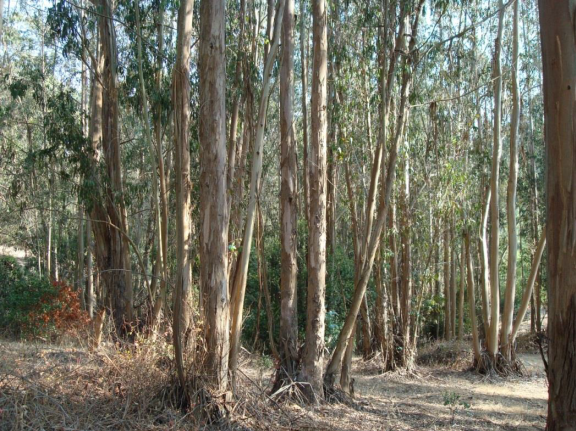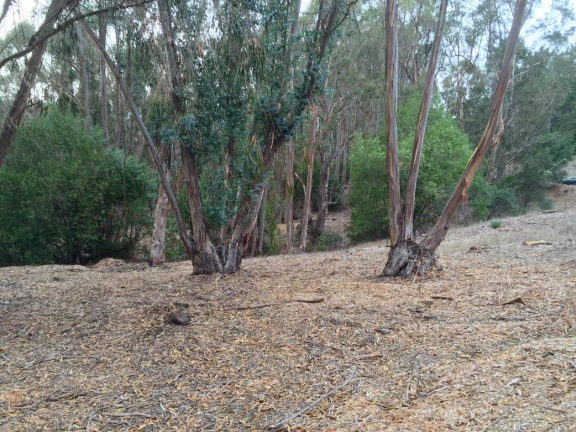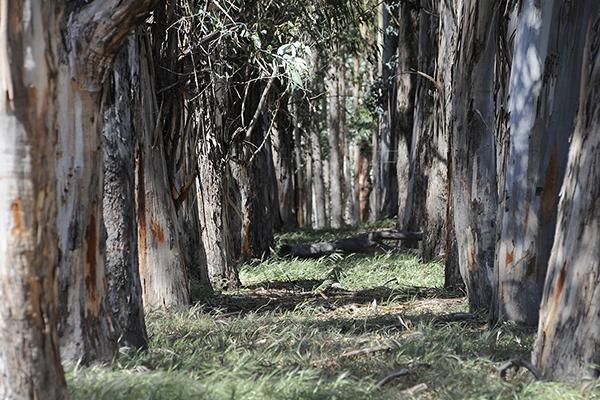Q. What is the FEMA grant?
A. The $4.65 million FEMA grant will pay for the East Bay Regional Park District, City of Oakland and UC Berkeley to thin trees (mostly eucalyptus) and brush from about 800 acres of ridgeline in the East Bay Hills.
Q. Will you be clear-cutting?
A. No. Trees will be removed selectively through thinning, with many healthy mature eucalyptus trees remaining.
Q. Why are you doing this?
A. To reduce fire danger and to increase biodiversity. Eucalyptus are a prevalent species in our high-priority recommended treatment areas. Thinning eucalyptus forests should allow room for native oaks, laurels and native shrubs to grow, which is beneficial for the ecosystem and less of a fire risk for local communities. In most of our treatment areas, these native species are already present in the understory of the thick eucalyptus forest.
Q. Are you using herbicide?
A. Yes. In some areas, trained personnel will be hand-applying very small amounts of Garlon to prevent stumps from re-growing. Garlon has been proven safe for this purpose. It will not be applied near creeks or other water sources. Less than 20 gallons will be used annually over the 800 acres of ridgeline in the East Bay Hills.
Q. How many trees are you removing?
A. We don’t know because the trees will be selected as the project progresses, over the course of a decade. The number is likely to be a few thousand, scattered over 20 miles or so of ridgeline.
Q. What about the hawks and eagles that nest in the eucalyptus?
A. Our protocol is to survey all habitats before any work and we will not remove trees that have active nests. Hawks and other birds thrived in the East Bay for millennia before eucalyptus were introduced, and we expect they’ll continue to thrive. Many of our native bird species nest in smaller trees or brush, and we expect they will benefit from the diversity of habitat.
Q. Who came up with this plan?
A. The plan was created by dozens of biologists and fire personnel, from numerous agencies, over a period of more than 10 years. Public input was a significant part of developing the plan. The FEMA project is part of the Park District’s overall Fuel Management Plan, which was adopted by the Board of Directors in 2010 after many years of research and public review. Work described in the Fuel Management Plan began has been occurring since its adoption and we are monitoring the results.
Q. Is this going to ruin views in the parks?
A. Views will change, but over time, this project will improve the views and landscape in the parks. We expect a resurgence of native trees and wildlife, which will create a more natural, and safer, environment for wildlife as well as the 2.5 million people who live in the East Bay.
Q. How can I learn more?
A. Check our website for more information about our Fuel Management Plan, the FEMA project, and updates about our fire-hazard reduction strategies.
Before-and-after photos showing a thinned eucalyptus stand:

Before

After

Point Pinole

